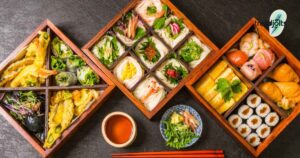Learning Japanese kanji characters can feel like staring at a mountain of mysterious symbols. You’re not alone – thousands of characters seem impossible to master! However, the secret isn’t grinding through endless lists. Smart learners use proven techniques that make kanji memorization surprisingly manageable and even enjoyable.
This comprehensive guide reveals effective memorization methods that accelerate your Japanese learning journey. Whether you’re struggling with hiragana basics or tackling advanced kanji characters, these strategies will transform how you approach written Japanese. From spaced repetition systems like Anki to radical recognition techniques, you’ll discover why some students master kanji in months while others struggle for years.
Ready to unlock fluency faster than you ever imagined?
Why Kanji is Essential for Japanese Learners
Kanji, the logographic characters borrowed from Chinese, are a crucial part of written Japanese. Mastering kanji improves your reading comprehension, helps with word recognition, and enhances your overall fluency. Without this foundation, you’ll struggle to understand even basic texts.
Without kanji knowledge, understanding written Japanese including books, newspapers, and signs can be nearly impossible. That’s why memorizing Japanese kanji characters effectively is a skill every serious learner must develop. Kanji unlocks the full potential of Japanese literacy and cultural understanding.
1. Master Hiragana and Katakana First
Before diving into kanji, it’s essential to learn the two phonetic scripts of Japanese. These foundational systems provide the building blocks for everything that follows. You can’t effectively study kanji without solid hiragana and katakana skills.
Hiragana and katakana mastery prevents confusion later in your Japanese learning journey. Many students rush into kanji too quickly and end up struggling with basic pronunciation. Building this solid foundation first makes kanji memorization much more manageable and effective.
How This Helps With Kanji
● Many kanji readings are written in hiragana (furigana), so understanding hiragana is a must.
● Some kanji-based words are also written in katakana, particularly in technical fields.
● Building a solid foundation in reading and pronunciation before moving to kanji prevents confusion later.
✔ Hiragana (ひらがな) – Used for native Japanese words and grammatical elements. ✔ Katakana (カタカナ) – Primarily used for foreign loanwords, onomatopoeia, and names.
✔ Pro Tip: Use flashcards, writing exercises, and apps like WaniKani or Anki to reinforce hiragana and katakana.
2. Focus on Kanji Radicals to Simplify Learning
Instead of memorizing kanji characters as individual symbols, break them down into radicals—the smaller components that make up each kanji. This approach transforms overwhelming complexity into manageable patterns. Radicals are like building blocks that repeat across thousands of characters.
Radical recognition dramatically speeds up kanji learning. Once you understand common radicals, you’ll start seeing familiar patterns everywhere. This pattern recognition skill makes even complex kanji feel approachable and logical rather than random symbols.
Why Learning Radicals is Effective
● Improves pattern recognition by helping you see similarities between characters.
● Reduces the number of unique strokes you need to memorize.
● Aids in understanding character meanings since many kanji share common radicals.
✔ Example: ● 木 (ki) = Tree ● 林 (hayashi) = Grove (two trees) ● 森 (mori) = Forest (three trees)
3. Set Realistic Kanji Learning Goals
Consistency is key when it comes to memorizing kanji. Set realistic goals, achievable targets that help you stay motivated and track progress. Ambitious plans often lead to burnout and frustration. Smart goal setting creates sustainable momentum.
Effective goal-setting prevents overwhelming yourself while maintaining steady progress. Many learners attempt too much too quickly and abandon their studies. Strategic planning with manageable daily targets builds long-term retention and confidence in your kanji abilities.
Effective Goal-Setting Tips
✔ Learn 5-10 kanji per day rather than trying to memorize hundreds at once.
✔ Focus on high-frequency kanji used in daily life (JLPT N5-N3 level).
✔ Use kanji tracking apps to monitor progress and schedule reviews.
Example Goal: Memorize 50 new kanji per week and review previously learned ones at the end of each week.
4. Start With Commonly Used Kanji Characters
Japanese has over 2,000 jouyou kanji (常用漢字), but you don’t need to learn all of them at once. Instead, start with the most frequently used kanji found in daily life. This strategic approach maximizes your practical fluency from day one.
Common kanji appear everywhere in Japanese media, signs, and conversations. Learning these first gives you immediate returns on your study investment. You’ll recognize more words and feel encouraged by your rapid progress through real-world Japanese content.
Best Approach for Learning Common Kanji
● Use JLPT lists (starting with N5 and moving up).
● Focus on practical kanji (numbers, days, basic verbs, food, directions).
● Study kanji within sentences to learn natural context and usage.
✔ Example Kanji Set (Beginners – N5 Level):
● 日 (hi) – Sun, Day
● 月 (tsuki) – Moon, Month
● 水 (mizu) – Water
● 火 (hi) – Fire
● 友 (tomo) – Friend
5. Don’t Skip Writing Practice

Typing kanji is useful, but writing practice by hand improves memorization by activating muscle memory. Many learners make the mistake of relying solely on digital input methods. However, the physical act of forming each stroke creates neural pathways that typing simply can’t replicate.
Writing practice engages multiple areas of your brain simultaneously. When you trace 水 (mizu) with your hand, you’re not just memorizing – you’re building kinesthetic connections. This multi-sensory approach makes kanji characters stick in your long-term memory much more effectively than passive recognition alone.
Recommended Blog: Cultural Nuances to Understand When Learning Japanese
How Writing Reinforces Learning
✔ Improves stroke order recognition, making kanji easier to recall.
✔ Strengthens long-term retention by engaging multiple brain regions.
✔ Helps in reading handwritten Japanese (since typed fonts differ).
Practice Exercise:
- Write each new kanji 5-10 times while saying its meaning aloud.
- Use grid paper to maintain proper stroke balance.
- Try kanji tracing apps like Kanji Study or Skritter.
6. Use Flashcards and Spaced Repetition for Maximum Retention
Spaced repetition (SRS) is one of the most scientifically proven methods for memorization. This technique works by showing you kanji characters at increasing intervals, right before you’re about to forget them. Instead of cramming, you review strategically.
SRS systems like Anki and WaniKani automate this process perfectly. They track your performance and adjust review schedules accordingly. This means you spend more time on difficult kanji and less time on ones you’ve already mastered, making your study sessions incredibly efficient.
How SRS Works for Kanji
✔ New kanji are reviewed frequently at first, then less often over time.
✔ Helps reinforce long-term memory while reducing study time.
✔ Keeps difficult kanji in active recall for longer.
🔹 Best SRS Flashcard Apps for Kanji Learning:
- Anki – Customizable flashcards with audio and stroke order.
- WaniKani – A structured kanji learning system.
- HeyJapan – Great for JLPT-focused kanji practice.
✔ Pro Tip: Make flashcards that include:
- Kanji + Meaning
- Readings (On’yomi / Kun’yomi)
- Example Sentence
7. Avoid These Common Mistakes When Learning Kanji
Even with the best strategies, some mistakes can slow down your progress. These common pitfalls trap many Japanese learners and prevent them from achieving fluency. Understanding these errors helps you avoid months of frustration.
Kanji memorization requires smart approaches, not just hard work. Many students fall into these traps because they seem logical at first. However, these mistakes actually work against how your brain naturally processes and retains information.
1. Ignoring Stroke Order
Kanji has a specific stroke order, and writing it incorrectly can make recognition harder.
✔ Solution: Always follow correct stroke order and practice writing regularly.
2. Relying Only on Rote Memorization
Simply drilling kanji without understanding context leads to quick forgetting.
✔ Solution: Learn kanji in words and sentences for better retention.
3. Trying to Learn Too Many Kanji at Once
Overloading yourself with hundreds of kanji too quickly often leads to burnout and frustration.
✔ Solution: Stick to manageable study goals and review frequently.
4. Not Reviewing Previously Learned Kanji
Kanji knowledge fades quickly if not reviewed at spaced intervals.
✔ Solution: Use SRS apps to maintain long-term recall.
Final Thoughts: Learn Kanji Effectively with the Right Approach
Mastering kanji doesn’t have to be a struggle. By using smart study techniques, setting realistic goals, and incorporating both active and passive learning, you can memorize Japanese kanji characters effectively without feeling overwhelmed. The key lies in combining multiple approaches rather than relying on a single method.
Kanji learning becomes enjoyable when you use the right strategies. Instead of viewing thousands of characters as an impossible mountain to climb, break the journey into manageable steps. With consistency and the right tools, you’ll steadily build your kanji proficiency and unlock the full potential of reading and writing in Japanese!
Quick Recap of the Best Kanji Learning Tips:
✔ Learn hiragana & katakana first before tackling kanji.
✔ Break down kanji into radicals for easier memorization.
✔ Use flashcards with spaced repetition to reinforce memory.
✔ Write kanji by hand to activate muscle memory.
✔ Study kanji in context rather than as isolated symbols.
✔ Review regularly to prevent forgetting.
🚀 Start today and make kanji learning an enjoyable part of your language journey!










